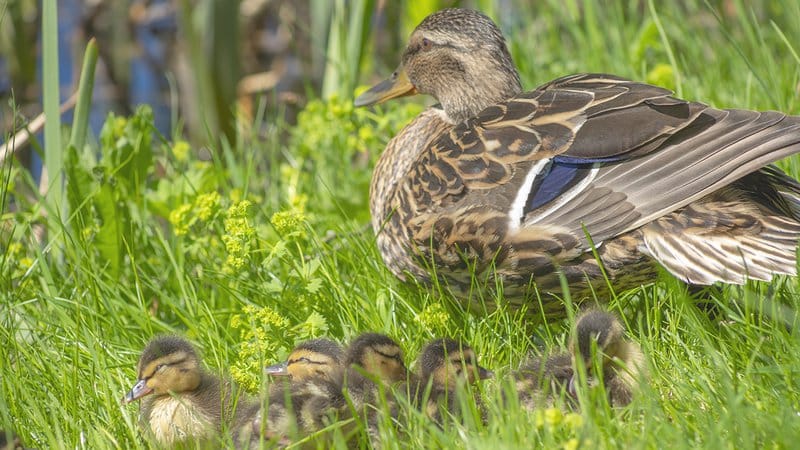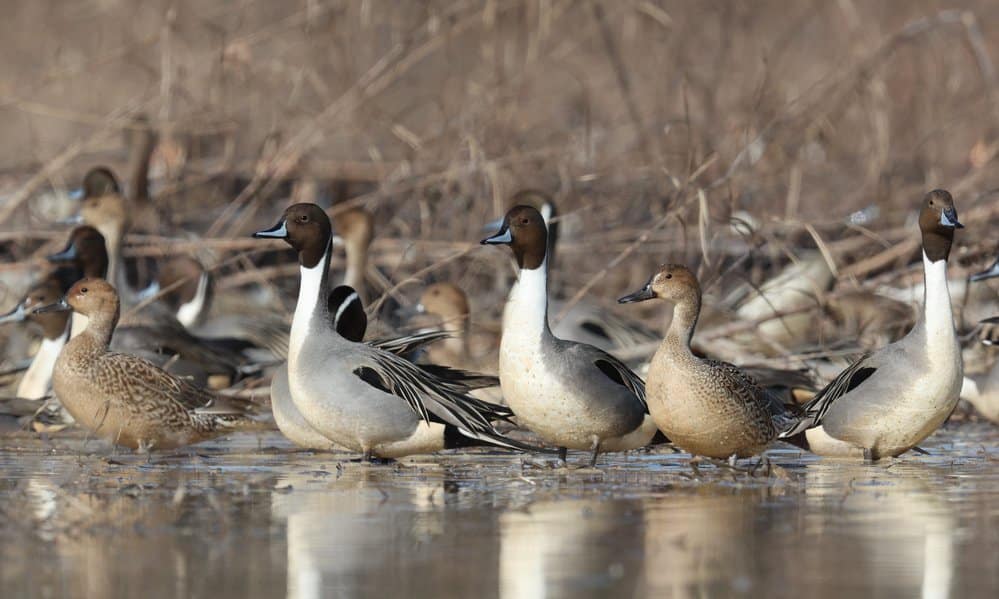Duck numbers drop in breeding grounds
BY Jim Harris
ON 08-23-2023

Aug. 23, 2023
Jim Harris
Managing Editor Arkansas Wildlife Magazine
LITTLE ROCK – The U.S. Fish and Wildlife Service released its report on the 2023 Waterfowl Population Status late last week, and the numbers of ducks slid from 2022’s estimate, with drop attributed to extremely dry habitat conditions on the breeding grounds of Canada and the northernmost U.S.
Surveys were conducted in May and early June by the USFWS, Canadian Wildlife Service and other partners. The total of breeding ducks in the traditional survey area was 32.3 million ducks, a 7 percent drop from 2022’s estimate of 34.7 million ducks and 9 percent below the long-term average (since 1955).
Perhaps more startling about the newest duck counts were the numbers of breeding mallards, which dropped 18 percent (from 7.4 million in 2022 to 6.1 million this spring).
“I was surprised there was that big of a difference in the mallard count,” Brett Leach, the Arkansas Game and Fish Commission’s waterfowl program coordinator, “but it really emphasizes that we really need to be focusing on conservation efforts on the breeding grounds as well. I mean, that’s where all these birds are being produced and they’re coming down to Arkansas from there.”
The drop of the overall duck count was not as surprising to Leach, he said. Because of the dry conditions, which put a dent into the number of ponds available for the birds, Canada’s landscape was so dry, it led to extensive wildfires that reached all the way to the eastern part of the country.
“Conditions were drier up on the prairies. Those two things (habitat and breeding numbers) are very correlated with each other so if you don’t have water on the prairies, the number of breeding waterfowl is not going to be as high,” said Leach, who became the AGFC’s waterfowl program coordinator in January, succeeding Luke Naylor, who moved up to chief of the agency’s Wildlife Management Division.

On a positive note, the number of pintails surged upward 24 percent, from 1.78 million in 2022 to more than 2.2 million this spring.
“That was great to see. Pintails were on the brink of having a closed season based on last year’s breeding and habitat survey,” Leach noted.
The USFWS flies transect-based surveys over the breeding grounds similar to what Arkansas waterfowl biologists use in state to count waterfowl during the season in the winter, Leach said.
Leach said the most recent numbers aren’t a reason for Arkansas waterfowlers to be too worried about the upcoming season. According to another USFWS report issued last week, Arkansas failed to reach 1 million total ducks harvested last season for a variety of reasons, mostly that it was dry and unseasonably warm until late December, when a large Midwestern snow storm covered the region above Arkansas and drove ducks briefly into The Natural State. Missouri was dry for much of the season, as were states all the way to Canada.
“I wouldn’t be overly concerned based off that drop for a one-year difference (of breeding counts),” Leach said. “It could just kind of be dependent on what transects they are flying. What we see here in Arkansas is going to be influenced by weather. If there is a lot of snow and ice up north of us blocking food resources, it will help bring more birds down here. If we don’t have that weather up there … That’s going to be the biggest driver for what we’re seeing down here this winter.”
The conservation efforts on this end of the Mississippi Flyway continue to get the AGFC’s focus with more moist-soil acreage added in the off-season and improvements to the system of greentree reservoirs, Leach noted.
“We’re continuously trying to make our moist-soil units better. We’re obviously working on our greentree reservoir renovations,” he said. “We’re setting the table up correctly. So all we need is the birds to show up and we should be good down here.”
CUTLINES:
MALLARD WITH DUCKLINGS
Drier conditions and loss of habitat on the breeding grounds has impacted mallard populations which dropped 18 percent in this year’s breeding ground surveys.
PINTAILS
Northern pintails recorded in this year’s breeding population surveys surged upward 24 percent, from 1.78 million in 2022 to more than 2.2 million this spring.
Recent News

AGFC Commissioner Meeting Notice
Jul. 15, 2025

Arkansas Wildlife Weekly Fishing Report
Jul. 10, 2025
Subscribe to Our Weekly Newsletter E-mails
Don’t miss another issue. Sign up now to receive the AGFC Wildlife Weekly Newsletter in your mailbox every Wednesday afternoon (Waterfowl Reports are published weekly during waterfowl season and periodically outside the season). Fishing Reports arrive on Thursdays. Fill in the following fields and hit submit. Thanks, and welcome!
